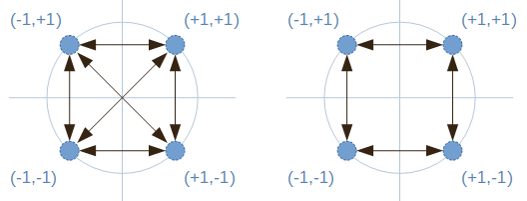Constant envelope modulations are of vital importance in radio communications due to limitations of electronic components. In practice it is necessary to analyze not only the symbols of a modulation, but also the transitions between them. For example, in a QPSK modulation, all symbols have constant envelope, but there are transitions between them where the […]









